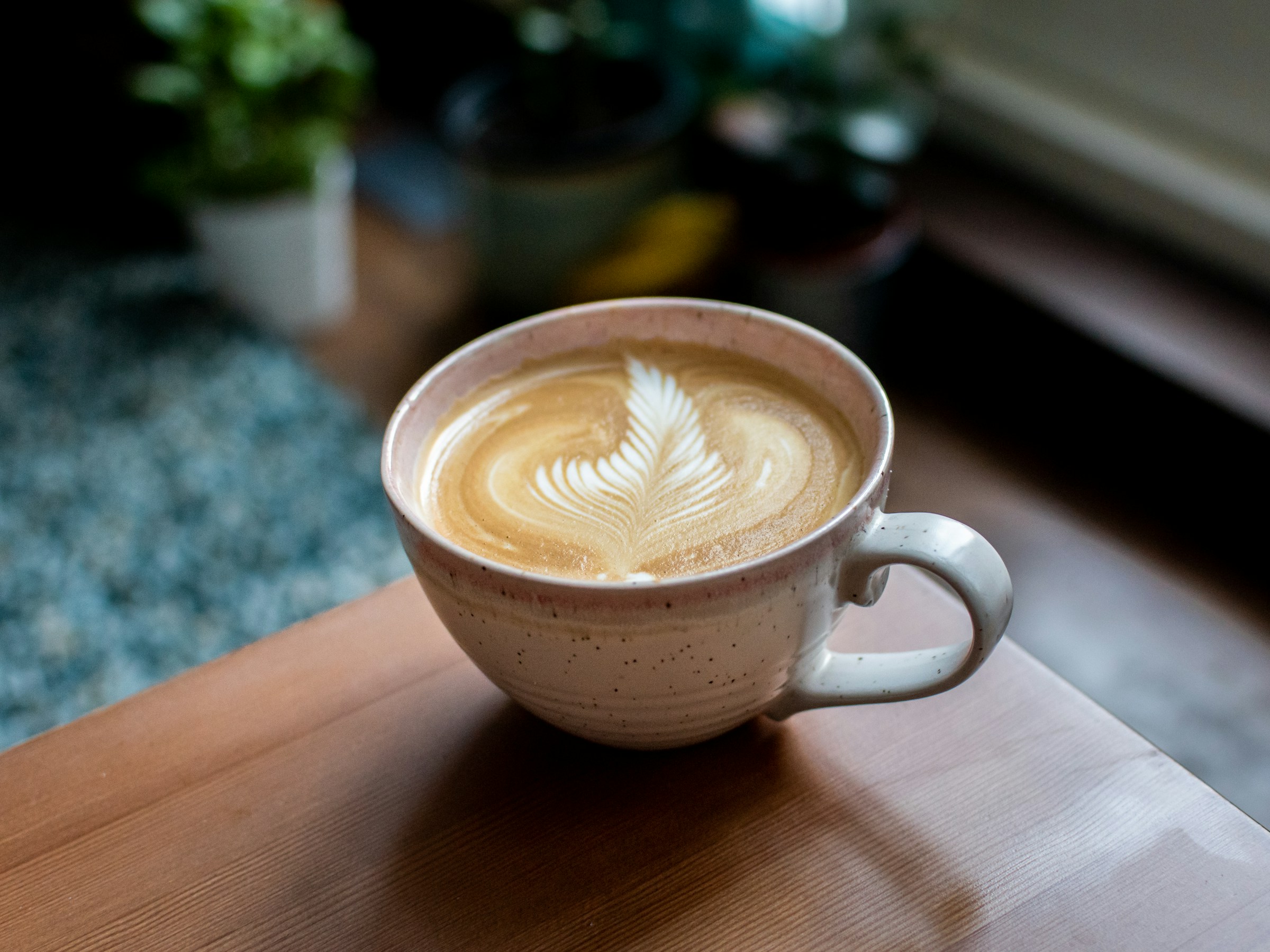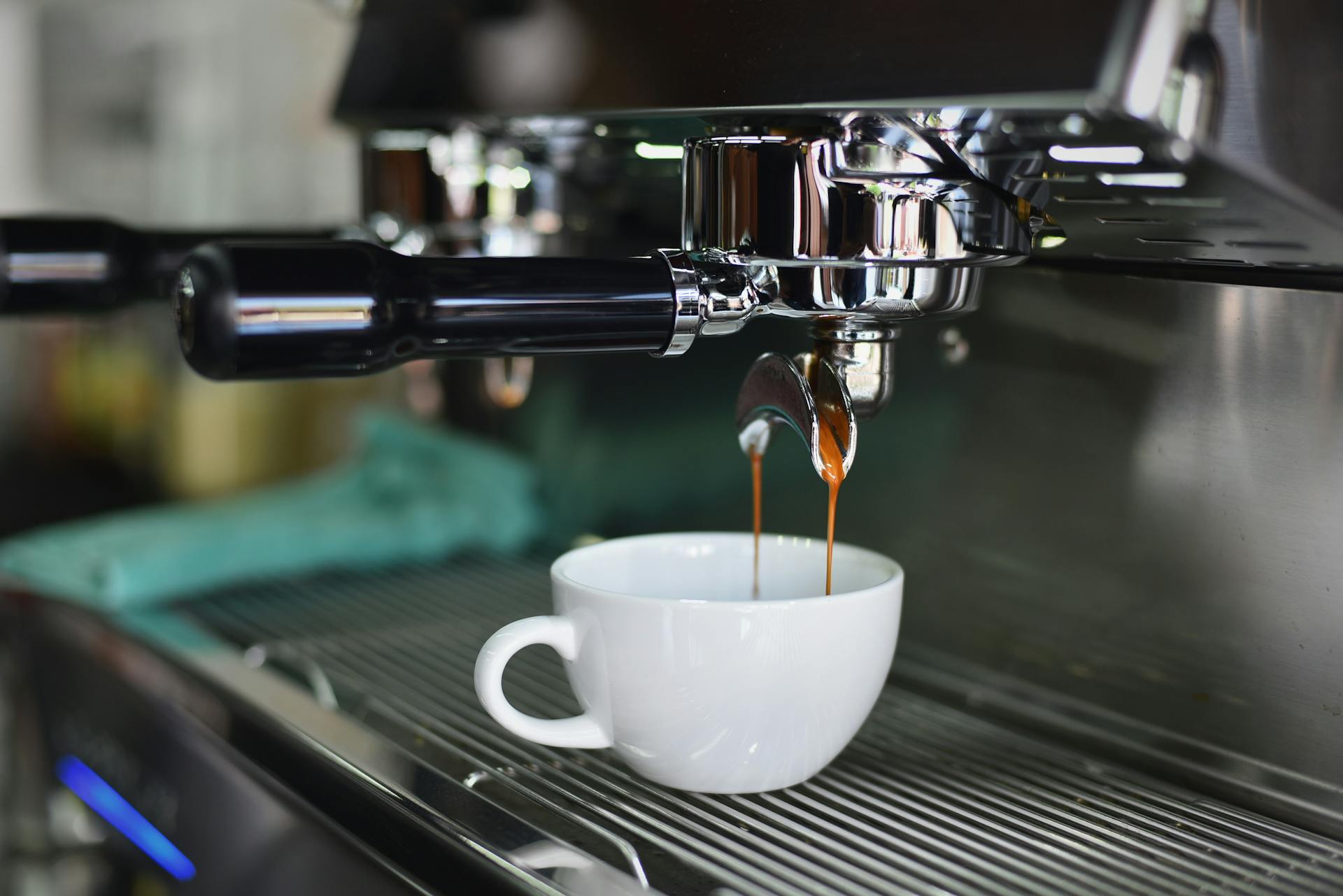
Espresso lovers who travel overseas may find a new world of coffee shop menu options not commonly seen in U.S. coffee chains. One drink popular in Australia, the flat white, has made its way to many U.S. coffee shops, including Starbucks. Yet most Americans do not actually know what this drink consists of. The flat white is a delicious, smooth, and velvety espresso drink that you might just be missing out on. Here’s what you need to know about the flat white.
What is a flat white?

You can think of a flat white as a hybrid between a standard latte and a cappuccino. A classic latte is made with a shot of espresso, steamed milk, and foam on top. In contrast, a flat white is a smaller drink than a latte and is made with a double shot of espresso with micro-foamed milk on top. On the other hand, a flat white is larger than a cappuccino, which is made with a more equal ratio of espresso, steamed milk, and milk froth.
To make a flat white, you (or your barista) will start by brewing two fresh espresso shots. From here, a thin layer of micro-steamed milk is added to the drink. A standard flat white does not have added sugar. Rather, it only has the sugar that naturally occurs from the milk used. If you prefer a sweetened coffee drink, flavored syrups or sugar packets can be added to a flat white as you would any other coffee or espresso beverage.
One of the primary differences that sets the flat white apart from other espresso drinks is the use of microfoam. Unlike regular milk foam, microfoam has very small bubbles that make the drink ultra-smooth and creamy.
Where did the flat white originate?

There is some controversy over the true origins of the flat white between Australia and New Zealand, but most believe the drink first made an appearance around 1986 in Australia. Today, the flat white remains one of the most popular coffee/espresso drinks ordered at coffee shops in these countries. However, the flat white is a bit harder to find in the United States.
Starbucks first debuted the flat white nationwide across its stores in the U.S. in 2015, yet many find this drink is still hidden on Starbucks’ menu. Starbucks locations in Australia, however, have had the drink on its menu since 2009. Amongst many rotating options and seasonal coffee offerings on menus in the U.S., the flat white tends to be forgotten by many Starbucks patrons. Other nationwide coffee chains in the U.S., such as Dunkin’, do not offer a flat white.
Who might like a flat white? 
True espresso lovers are more likely to love the flat white, as it has a strong espresso taste by using two espresso shots as its base. In comparison, lattes and cappuccinos typically only use one shot of espresso, which will result in a creamier and less strong overall taste. In a flat white drink, the espresso is not overpowered by the milk on top — rather, it is enhanced. If you have more of an “I like coffee with my milk” taste palette, a flat white might not be your favorite drink option.
If you can’t seem to find a flat white on the menu of your local coffee shop, you can try ordering a latte with less milk. Although not the same, this is the closest option you’ll get to a flat white. Some variation in flat whites will also depend on the type of espresso used, such as a blonde roast espresso.
Sizing of flat white drinks

In general, flat whites are smaller coffee drinks that usually range between 5 to 6 ounces total. In America, coffee sizes tend to be much larger than in other countries. With this in mind, it’s easy to see why the flat white isn’t quite as popular in the U.S. For a flat white to be made correctly, a small cup size is necessary. Also, it should be noted that this indulgent drink is not meant to be slurped down fast, as you would with a cold brew or an iced coffee. This drink is best for slow sipping over conversation rather than a fast dose of caffeine.
While not as popular, there is such a thing as an iced flat white. This drink’s flavor is similar to an iced latte but contains a higher concentration of espresso than milk. You can find the iced flat white at most Starbucks locations, but it’s likely to be tough to find at independent coffee shops.




